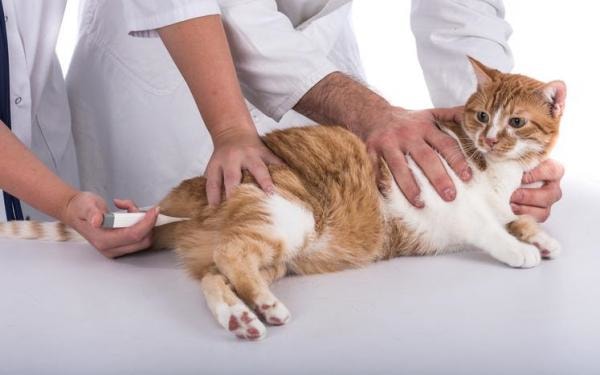Cats are the most adorable pet animals in houses and apartments. The most common questions are how you identified that your cat has a fever. You never feel the fever by kissing your lovely cat or by gentle touch. The only way to know the cat fever is taking the body temperature of your pet by a thermometer. The average body temperature is 100.5° to 102.5° F. If the body temperature is more than the normal range, you can be affected by any disease, and body temperature rises.
Your cat’s body temperature goes more than 106° F; the vital organs may be damaged due to fever. It would help if you took immediate measures to reduce body temperature. There are many first aid techniques to reduce the body temperature of cats. These measures will save the life of your cats.
Important Information on Cat Fever
Cat fever is a common presenting sign of many infectious, metabolic, immune-mediated, and neoplastic disease processes manifested by increasing body temperature. Most cat fevers are due to transient viral or bacterial infections in general practice, which resolves spontaneously or responds to appropriate therapy.

What causes fever in cats?
Hyperthermia or increased body temperature of a cat is also considered as cat fever. Many infectious and non-infectious causes may cause an abnormal increase in body temperature. The non-infectious causes of cat fever or hyperthermia are increased environmental temperature, increased muscle activity, hyperactivity of the cats, and neoplastic diseases. The infectious causes of fever in cats are:
- Localized or systemic infections.
- Bacterial endocarditis.
- Toxoplasmosis.
- Lyme disease.
- Psittacosis.
- Ehrlichiosis.
- Leishmaniasis.
- Feline Leukemia.
- Babesiosis.
- Brucellosis.
- Aspergillosis.
- Urogenital infections.
- Rheumatoid Arthritis.
- Immunodeficiency Syndromes.

Clinical Signs of Cat Fever
Fever also has some beneficial effects in the body that help fight against infection by stimulating the immune system. The fever in cats creates some telltale behaviors in cats. This behavior helps to produce excess temperature to fight against illness. The non-specific clinical signs of cat fevers are similar to many diseases. The most common signs of cat fever are:
- Rise body temperature more than 103 F.
- Anorexia.
- Loss of condition.
- Lack of activity.
- Depression.
- Uneven or irregular body hair.
- Showing unbecoming behavior.
- Shivering.
- Increased rate of breathing.
- Enlargement of external lymph nodes (Lymphadenopathy).

Diagnosis of Fever in Cats
The main ways to diagnose fever in cats are clinical signs, history of vaccination, medication, previous diseases, and laboratory findings. It would help if you considered the environmental temperature, tick infestations in the cats or its house, mode of activity or exercises, and other pets’ disturbance.

How Do You Take Temperature of your Cats
The most common and easy method of taking the body temperature of cats by using a thermometer. The thermometer maybe a glass or digital. You must apply some glycerine at the tip of the thermometer and gentle inset into the rectum. Please wait for one minute and bring it out. Clean the thermometer and read the temperature and record it for further investigation.

Cat Care Tips for Fever
Some first aid measures at home can manage the hypothermia or cat fever. The cat care tips during fever are as follows:
- Measure the body temperature by a thermometer.
- Take the cat in an open place and allow him a typical environment.
- Allow your natural cat ventilation.
- Sponge your cat’s body with cold water and make him dry.
- If possible, keep him in a cold towel.
- Give normal saline water to drink.
- Remove any unwanted substances that make him anxious.
- If the situation does not become standard, take him to your vet.
- Keep your cat healthy and active.

Treatment of Cat Fever
Cats are susceptible to medication. Never give any medicine to your cats without consulting with your vets. Cat fever treatment is mainly based on the clinical signs and confirmatory diagnosis of the causes of fever. The treatment strategy includes:
- Antipyretic drugs.
- Antibiotics in case of bacterial diseases.
- Antifungal drugs in case of fungal diseases.
- Drugs or supplements for increasing appetite.

Concluding Remarks of Fever in Cats
Fever is beneficial for the body to fight against infections. On the other hand, cat fever is the clinical manifestations of many infectious and non-infectious diseases. As a cat owner, you must be very cautious about the increased temperature of your cats. You must take adequate first aid measures to save the life of your lovely cats. After that, you must take him to your vet for further treatment and advice. In my article, I have given a brief idea about cat fever. I think this piece of information will help you to save the life of your lovely pet. If you are benefited, please share this information with other cat owners.